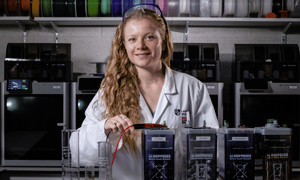Innovative Battery-Electrolyser technology: Advancing green hydrogen production

Researchers from Loughborough University have developed a novel approach to green hydrogen production by adapting lead-acid battery technology into a battery-electrolyser system. This method transforms reactions that were previously considered inefficient in traditional lead-acid batteries into productive ones for hydrogen generation. By leveraging widely available materials, this approach provides a potentially cost-effective and sustainable alternative to conventional electrolysers. Demonstrator systems are being deployed in Malawi, Zambia, and Ivory Coast, aiming to offer reliable and sustainable energy solutions to underserved communities.
Addressing energy access and hydrogen production challenges
Around 13% of the global population lacks access to electricity, and 2.4 billion people still depend on hazardous cooking fuels.[1] The battery-electrolyser system addresses these issues through three operational modes:
· Battery Discharge: Supplies stored energy when required.
· Battery Charge: Stores surplus energy from renewable sources.
· Hydrogen Production: Generates hydrogen via electrolysis.
This multi-functional capability enhances resource utilisation and cost-effectiveness while supporting the transition to green hydrogen.
The need for green hydrogen
Current hydrogen production is predominantly reliant on steam methane reforming, which releases substantial CO2 emissions. While alternative electrolysers, such as alkaline and proton exchange membrane (PEM) systems, can produce green hydrogen, they require expensive and rare materials such as iridium, limiting large-scale adoption. Furthermore, these systems often remain inactive when renewable energy is unavailable, reducing overall utilisation.[2]
The battery-electrolyser technology mitigates these issues by using widely available lead-acid battery materials, making it compatible with existing recycling streams and reducing costs. The system’s ability to function in both energy storage and hydrogen production modes ensures a more consistent use of renewable power.
Technical insights into the cell design
The battery-electrolyser cell consists of lead-based electrodes, with the positive electrode undergoing oxidation while the negative electrode facilitates hydrogen evolution. Unlike conventional electrolysers, this system operates with a dual-function mechanism, allowing for reversible charge and discharge cycles. Research has shown that optimising the electrode surface area and porosity can improve hydrogen production rates. Additionally, the choice of electrolyte concentration and separator design plays a crucial role in maintaining system longevity and performance.[3], [4]
Deployment and impact in Africa
Pilot projects in Africa aim to demonstrate the practical benefits of the battery-electrolyser system:
· MESCH – Modular Energy Storage with Clean Hydrogen in Africa
Project (Malawi): Providing clean hydrogen for hospital power and sustainable cooking.[5]
· LoCEL-H2 – Creating clean, reliable, and sustainable energy
Project (Zambia & Ivory Coast): Supporting a school in Zambia and establishing a community restaurant in Ivory Coast to drive economic development through clean energy solutions.[6]
Replacing charcoal with green hydrogen in these regions has the potential to improve public health, reduce deforestation, and generate educational and employment opportunities.
Integration with Offshore Wind Energy
Beyond rural electrification, this technology offers a potential solution for integrating offshore wind energy. Currently, excess wind power is often curtailed due to grid limitations. Between 2021 and 2023, approximately 6.5 TWh of wind power was curtailed in the UK, incurring costs of £1.5 billion and resulting in 2.5 million tonnes of CO2 emissions.[7] By incorporating battery-electrolysers with offshore wind farms, surplus energy can be converted into hydrogen rather than wasted, ensuring a more stable and sustainable renewable energy supply.
Challenges and Future Developments
Key research challenges include improving electrode stability, refining separator design, and ensuring long-term durability under electrolysis conditions. Additionally, an important consideration is the integration of compressors and hydrogen storage tanks. Matching a commercial tank with an off-the-shelf compressor presents efficiency and compatibility issues, leading researchers at Loughborugh to explore the development of a custom compressor for a commercial tank and vice versa.
With over £12 million in grant funding, ongoing research efforts are focused on scaling up this technology and optimising its performance for widespread adoption. Collaborations with industry partners such as Monbat, Hoppecke, and the Consortium for Battery Innovation are driving the commercialisation of battery-electrolyser systems. By integrating this technology into microgrids and renewable energy networks, the goal is to enhance the accessibility and affordability of green hydrogen while reducing global carbon emissions.
[1] “Progress on Basic Energy Access Reverses for First Time in a Decade.” [Online]. Available: https://www.irena.org/News/pressreleases/2024/Jun/Progress-on-basic-energy-access-reverses-for-first-time-in-a-decade. [Accessed: 06-Mar-2025].
[2] B. Jenkins et al., “Techno-Economic Analysis of Low Carbon Hydrogen Production from Offshore Wind Using Battolyser Technology,” Energies, vol. 15, no. 16, 2022.
[3] E. Ashton et al., “Evaluation of the Catalytic Effect of Metal Additives on the Performance of a Combined Battery and Electrolyzer System,” ACS Appl. Energy Mater., 2025.
[4] M. Brenton, E. Ashton, J. Wilson, R. Wilson, and D. Strickland, “Durability Testing of Battery-Electrolysers for Hydrogen Cooking and Microgrid Applications,” 13th Int. Conf. Renew. Energy Res. Appl. ICRERA 2024, pp. 426–431, 2024.
[5] “MESCH Project.” [Online]. Available: https://mesch.co.uk/. [Accessed: 06-Mar-2025].
[6] “LoCEL-H2 project,” 2023. [Online]. Available: https://locelh2.org/. [Accessed: 16-Aug-2024].
[7] “Britain wastes enough wind generation to power 1 million homes - Carbon Tracker Initiative.” [Online]. Available: https://carbontracker.org/britain-wastes-enough-wind-generation-to-power-1-million-homes. [Accessed: 30-Dec-2023].
